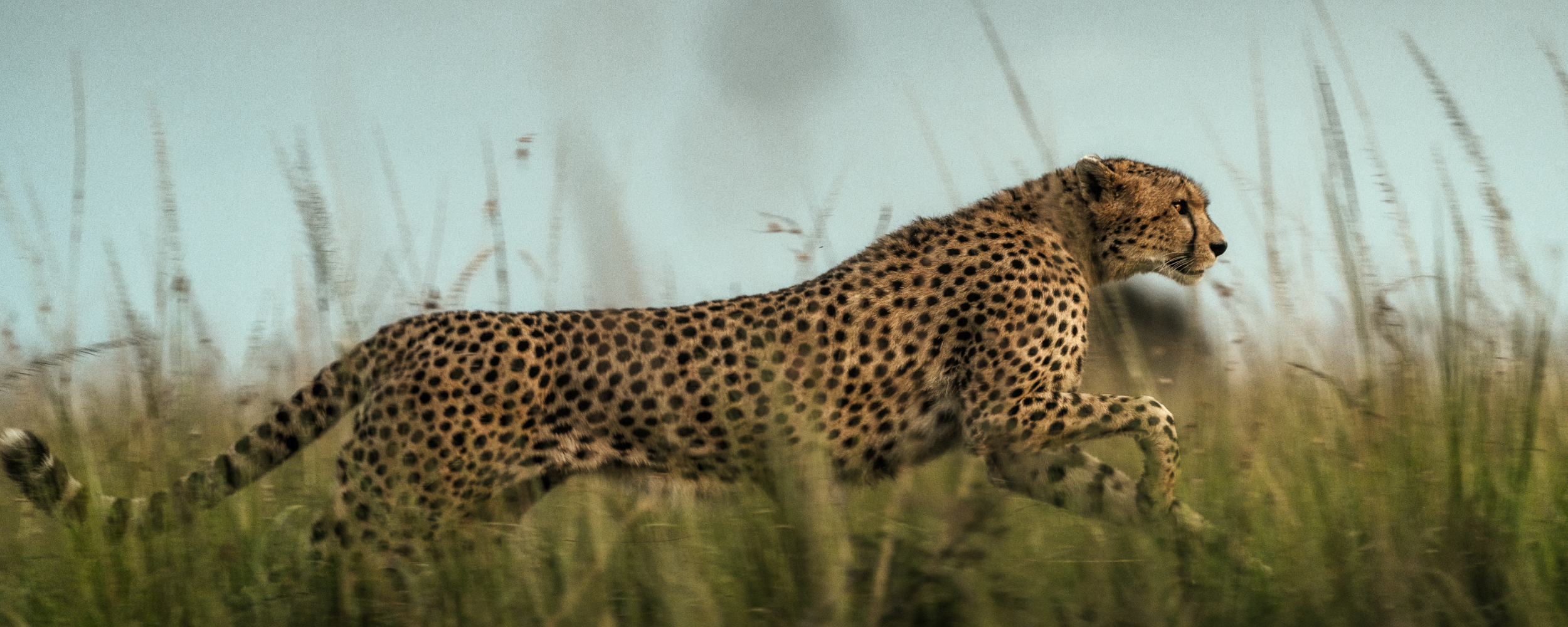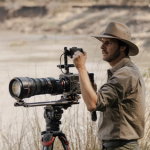In the heart of Tanzania’s pristine wilderness, where the stunning landscapes and abundant wildlife have lured adventurous travellers for generations, there is a safari company that stands out not just for its thrilling adventures but for its unwavering commitment to making a difference. NOMAD Tanzania, a renowned name in the world of safari and conservation, has recently taken a step to further its mission of promoting sustainable travel, wildlife conservation, and community development.
NOMAD recently teamed up with award-winning wildlife cinematographer Chris Schmid to shoot a conservation video in the Serengeti National Park that not only showcases Tanzania’s breathtaking landscapes and incredible biodiversity but also highlights NOMAD’s dedication to giving back to the local environment.
Chris outlines the project’s significance for African Tourism. “Africa saw a decrease in visitors during the Covid outbreak. No tourists meant no money for the reserve. When visiting Africa, it’s important that we conscientiously decide where to put our money and try to make a positive impact. It’s circular. By spending money in Africa, you ensure the preservation of what you see.”
Filming the world’s fastest animal.
In the wild, Chris operates the RED V-raptor camera, using Anton/Bauer V-Mount Titon Micro batteries to keep it powered all day, paired with the Canon 50-1000mm lens. He also shoots on two Sony FX6 cameras powered by Anton/Bauer’s Titon Micro batteries and equipped with a 200-600mm zoom lens. “It gives us different footage; you have static footage and then you have more moving footage with the Ronin on the front crane. It depends what is going on, but you must be ready to capture moments.”
Viewers often perceive wildlife filmmaking as a slow and inactive process. The reality is it demands rapid reflexes and preparation. Chris explains, “To capture those fleeting moments on film, you must master the art of anticipation. It is important to know animal behaviour so you can predict where they are going, position yourself correctly, find the best light and you wait with all your gear setup and ready. Photo camera ready on my right side and the video camera ready on the aktiv head. Then you wait. If a cheetah spots potential prey in the distance like a gazelle or impala, you need to be fully prepared as events unfold at lightning speed.”

Chis has supported his cameras for a number of years with the award-winning flowtech tripod, particularly when tracking down Namibian Lions. On this project though he had a greater need for speed, so upgraded his setup with the aktiv fluid head to make sure he had the fastest setup to match the world’s fastest animals.
“Adding the aktiv head to flowtech has changed my workflow. It is much quicker now to setup and level the camera and be ready for the shot, it is much more productive.”
Chris SchmidWildlife Cinematographer
“There are new opportunities for me to go as fast as possible and flat to the ground, which is amazing. I can use the speed-swap to switch the head to the car mount. I do not need to be worried about the tie-down and I can get different points of view now that I could not before. aktiv is more efficient because it used to take a lot of energy to unscrew when I needed to go down low and lay by myself. We are saving a good two or three minutes now with no tie down.”
Africa’s Great Migration
With a faster, more optimised support setup Chris can focus on capturing the beauty of mass migration across the plains of the Serengeti. In a single year, the massive herds can migrate 1,000 miles during one of the largest mammal migrations on Earth. Chris explains how the action unfolds “When you are following the migration you find all the big cats because they need food, you find lions, cheetahs, and leopards in the Serengeti. When the whole ecosystem is working together, it is amazing, especially when we are there filming them from a distance.”
“In June, I was in the centre of the Serengeti where the migration is. Then in August, we were in the north of Serengeti where they are crossing the Mara River to go to Kenya. This is where you can see all the action with the crocodiles and lions. It is always interesting to focus on this migration, because if you follow them, you can track all the cats and the interaction between predators and prey.”
“When migrating, the animals are amazing,” says Chris. “They can smell the rain two or three days ahead of time, so they know exactly when it is going to rain. And they start to move, 1,000s of them all the same direction.”
“Sometimes you wake up in the morning and you have nothing. Then you see one, two and then thousands in a big herd come into view.”

Look into the eyes.
Capturing the “eyelights” of wildlife in wildlife filmmaking is a powerful technique that adds depth and emotion to the visual storytelling of the natural world. The term “eyelights” refers to the reflection of light in the eyes of animals, creating a distinctive sparkle or glint. These shimmering highlights serve as windows to the soul of the animals being filmed, allowing the audience to connect with their subjects on a more intimate level.

Look into the eyes, the window of the soul.
Keep it on the Down Low
For Chris, getting his camera as low as possible is key. With the aktiv system he was able to use the speed-levelling lever to take the head off and put on to his custom car mount, allowing him to keep the camera low off the truck and be able to hit the eyelines of the animals as he tracked them through the park.
He explains “You can level with one hand if you want to be fast. I’m shooting from the from the car and we have a custom mount very low, we took off the door of the car, we put a metal plate on there so I don’t have the chance to put my hand under the metal plate, there’s no screws, with the aktiv head I don’t need to go under it, I just use my hands, transfer it and I’m filming very fast. For me it was the best configuration because there is no other head you can set up like this.”
With no tie-down, filmmakers can get flat to the floor with their flowtech aktiv systems. This offers up unique angles which help tell a story from a unique perspective. Chris explains “When you go to Africa in the dry season, when the grass is short, and you take the system flat you have a hugely different point of view, which people are not used to because they usually see shots looking down. Even in photography. If you if you look at the photo on Instagram, a lot of people shooting or with this introspective, changing and putting yourself as low as possible, suddenly you’re on the same level of the animals and you have this grass in the sky in the background is much more interesting.”
Supporting the Beauty of Africa.
Chris’s creation of this new promotional video represents a vital step in highlighting the NOMAD lodges’ commitment to conservation. It not only showcases the incredible experiences that travellers can enjoy during an African safari but also underscores the lodges’ dedication to supporting the local communities living around the reserve. Every dollar spent by visitors contributes to a meaningful cycle, providing much-needed resources such as healthcare, insurance, and job opportunities to those who call this pristine wilderness home.
When you embark on an African adventure, you are not just exploring the wild; you are actively participating in a journey of positive change and sustainable coexistence with the extraordinary wildlife and people of this remarkable region.





